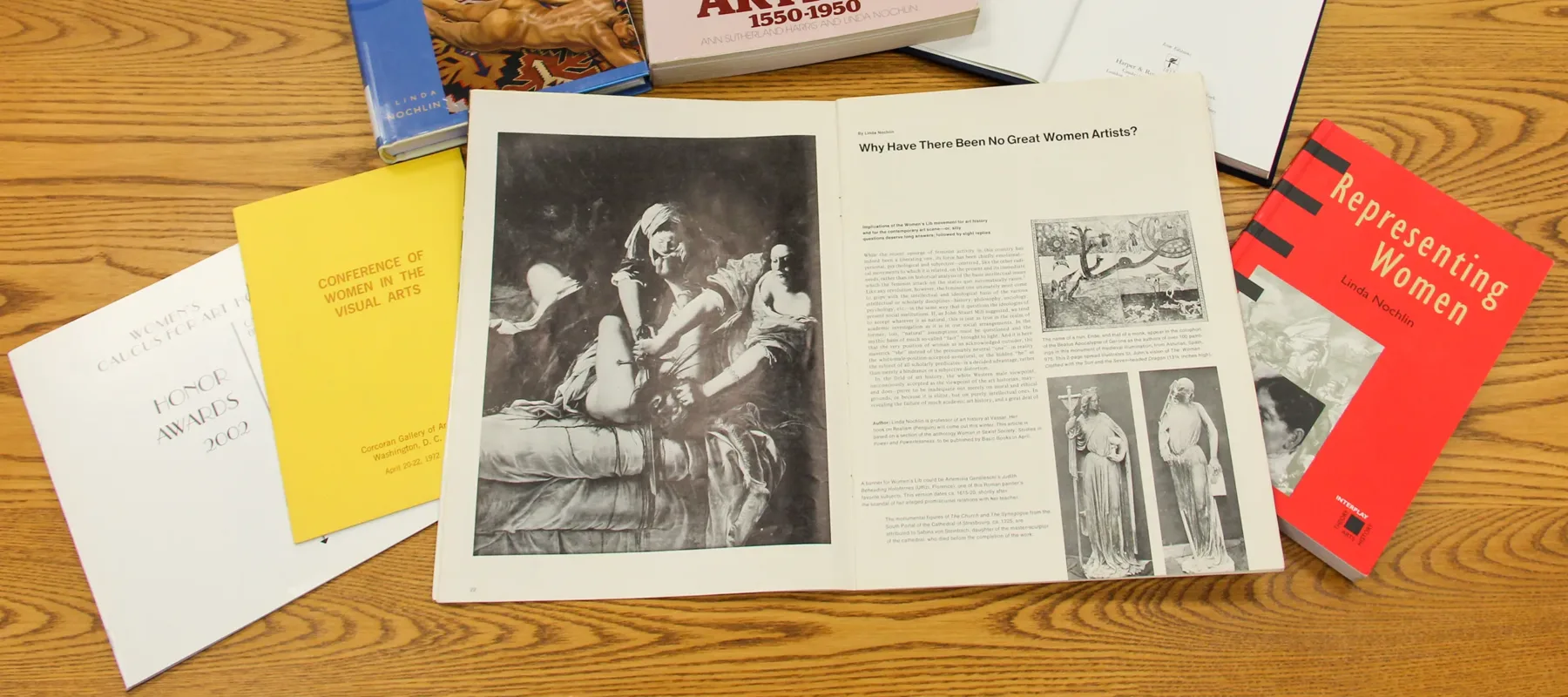Much of the way historians study art today can be traced to the contributions of Linda Nochlin (1931–2017), a scholar, critic, and curator who, beginning in the 1960s, tore through traditional ways of seeing and understanding art. Although Nochlin once wrote that she “became an art historian more or less by accident,” she seemed destined for the role. Remembering her, fellow art historian Kenneth E. Silver wrote, “It’s hard to imagine the art history of the last half century without Linda Nochlin.”

In a collaboration with the Smithsonian Institution’s Archives of American Art (AAA), NMWA’s Betty Boyd Dettre Library and Research Center (LRC) has mounted an exhibition displaying documents from Nochlin’s personal archives, which the AAA acquired in 2018. The exhibition includes samplings of correspondence, lecture notes, publications, childhood photographs, and a selection of postcards drawn from her sizable collection.
Nochlin’s archive reveals a woman of prodigious intellect, scholarly rigor, and deep commitment to the feminist project. She incorporated her groundbreaking ideas into her more than sixty years of teaching. She wrote or edited more than 150 published books and articles. The most well-known of these writings, a 1971 ARTnews magazine essay entitled “Why Have There Been No Great Women Artists?,” engaged the social and economic factors that often deprived women of taking their artistic work to the highest levels.
Nochlin wrote, “The question of women’s equality—in art as in any other realm—devolves not upon the relative benevolence or ill-will of individual men, nor the self-confidence or abjectness of individual women, but rather on the very nature of our institutional structures themselves and the view of reality which they impose on the human beings who are part of them.”
This approach was far from mainstream thought at the time. It challenged the thinking of both traditional art experts as well as feminist artists and their champions. The framework became an essential mode of critiquing not only art by women, but also by artists of color, LGBTQ artists, and others pushed to the art world’s periphery.
Nochlin’s collaborator Maura Reilly recalled that the scholar “famously argued that ‘feminist art history is there to make trouble, to call into question, to ruffle feathers in the patriarchal dovecotes.’” Riley added, “She has spent her entire professional career doing just that, making trouble, embodying the position of the maverick.”
To learn more about Nochlin and her work, visit the LRC’s research guide, Linda Nochlin: The Maverick She.

